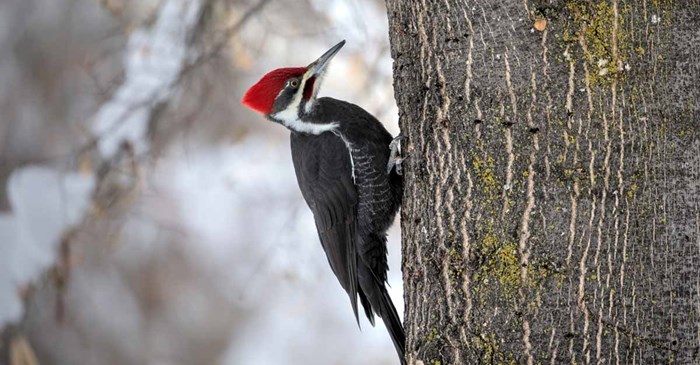Cooler weather means woodpeckers are making more appearances at backyard feeders. If you’re one of the lucky ones, that will include sightings of the striking Pileated Woodpecker. Here are some fun facts to know about this gorgeous bird.
Pileated Woodpeckers are the largest woodpeckers in North America
At 16-19 inches in length, the Pileated Woodpecker is about as large as the American Crow.
Pileated Woodpeckers maintain their territory year round
Many bird species pair up and establish a territory just for the nesting season. Not so for the Pileated Woodpecker. They stay together and keep rivals and invaders at bay well after the chicks have left the nest.
“Pileated” means “capped” or “crested”
The showy red crest of the Pileated Woodpecker gives it its signature look. And the word “pileated” derives from “pileus,” a close-fitting cap worn by the Romans.
They leave distinct markings
The strong, pointed bill of the Pileated Woodpecker is often described as a chisel. The markings they leave behind on soft and decaying wood are rectangular in shape.
Their favorite food is carpenter ants
Why do Pileated Woodpeckers spend so much time hammering dying trees and fallen logs? They’re looking for carpenter ants, their favorite source of protein. Studies of their diet show these ants make up 40% of their diet, but it can be as high as 97% in individual woodpeckers. Once they’ve bored holes into the soft wood, they insert their barbed tongues to gather up the ants, as well as any larvae and other bugs hiding below the surface of the bark.
Pileated Woodpeckers help other birds eat
As the Pileated Woodpecker hammers away, other bird species may hover nearby, ready to catch flying insects escaping from the new opening the woodpecker created.
Fall and winter are the best times to see Pileated Woodpeckers
As the leaves change and the weather turns colder, the Pileated Woodpecker adjusts its diet. Instead of spending its days high in the trees, devouring bugs and insects, it’s now making a broader search for nuts and seeds. This works out pretty nicely for a backyard birder. Setting out enticing foods, such as suet or a nut mix, will bring them in for a landing. Without a doubt, they'll love the nuts, fruit and corn found in Lyric Woodpecker No Waste Mix. Pick up a bag today
